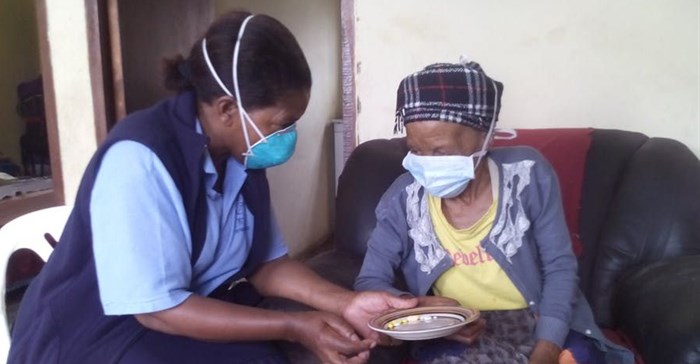
A community care worker providing treatment to a TB patient at her home. Wikkicommons/Stherere23
This crisis is two-fold. On the one hand is the lack of access and poor quality in the public health system which serves around 85% of the population. On the other hand is an expensive and inefficient private health sector for the remaining minority. There are massive inequities in the distribution of resources between the two sectors.
There is widespread recognition that health system legislation alone will not address the deep seated problems in both sectors. Top-down reforms like those proposed in the NHI Bill need to be complemented by a bottom-up process of strengthening health systems. This must be focused on the most decentralised level of the health system, the district health system. South Africa’s public health system is organised into 52 health districts.
My colleagues and I at the University of the Western Cape believe that this sort of strengthening is not only possible – it’s already happening in pockets. We have engaged with district, provincial and national government players to document the potential of such bottom-up initiatives.
Our recently published research showed how coordinated action by local, provincial and national government players, working with existing resources, can create a fairly rapid turn-around in the performance of health districts. The case study we focused on could provide valuable lessons as South Africa prepares to introduce the NHI.
Gert Sibande District
Gert Sibande is a health district in the largely rural province of Mpumalanga. In 2014, this district had the highest death rate from severe acute malnutrition in the country: 28% of children younger than five who were admitted to hospital with the condition died during their stay.
But there was a dramatic decline in deaths in Gert Sibande over the three years that followed. The number of children who died from severe acute malnutrition dropped to one-third of the previous levels 9%. This decline in deaths was associated with a 59% drop in admissions.
In other words, children with severe acute malnutrition weren’t only receiving more effective treatment, cases were being prevented from occurring in the first place.
Severe malnutrition has been a major contributor to child deaths in South Africa, along with causes such as pneumonia and diarrhoea. Despite South Africa’s wealth, child malnutrition remains unacceptably high. Addressing this is a national priority.
Our research team conducted in-depth interviews with healthcare providers and their managers, to identify how the rapid improvements in acute malnutrition outcomes in Gert Sibande District were made possible.
Interviewees reported widespread shifts in mindsets and practices over the three years. These included improved quality of hospital care for children with severe acute malnutrition and more rigorous identification of children at risk of malnutrition in primary health care facilities. Better referral systems and household follow-up of children by community health workers were also key.
We were particularly interested in understanding how these shifts were triggered in a public health system that is frequently regarded as being trapped in a culture of poor performance and low accountability.
Key health system interventions
Changes were initially prompted by consensus in Gert Sibande District that there was a problem to be addressed. This was followed by a series of health system strengthening interventions. These included:
Apart from the appointment of the part-time facilitator, no external donor resources were sourced or deployed to the district.
We characterised these interventions as producing three kinds of system-level change. One was “ways of thinking” (knowledge and the use of evidence). The second was “ways of governing” (leadership, participation and coordination). The third was “ways of resourcing” (inputs and capacity).
Way forward
The experience of Gert Sibande District is not unusual. There are several “pockets of effectiveness” in South Africa’s public health system. This points to the latent capabilities available in this system.
We believe that unlocking this latent capability needs the kind of deliberate actions seen in Gert Sibande. The system-level changes and health outcomes achieved through such actions will, in turn, only be sustainable in the long run if they are enabled by higher levels of the system.
This entails, firstly, a recognition that change at the frontline won’t be engineered by a stroke of the legislative pen. Meaningful change requires systematic approaches to strengthening, working directly at base of the health system. Gert Sibande’s experience suggests that this does not necessarily have to cost more.
Secondly, national leaders are the best placed to steer a wider consensus on the need to separate political from administrative decision-making in the health system, especially at provincial level. Meritocratic appointment of district and provincial managers, accompanied by more decentralised decision-making on appointments of staff and use of funds, would be an important first step.
A third supportive action would be to invest heavily in developing distributed leadership and management capacity, oriented to public value, as part of a reinvigorated focus on human resources for health.
These approaches could lay the groundwork for a successful NHI that genuinely addresses systemic problems from the bottom up rather than imposing solutions from the top down.
Maria van der Merwe and Beauty Marutla from the Mpumalanga department of health, and Joey Cupido and Shuaib Kauchali from the National department of health contributed to this article.
This article is republished from The Conversation under a Creative Commons license. Read the original article.































